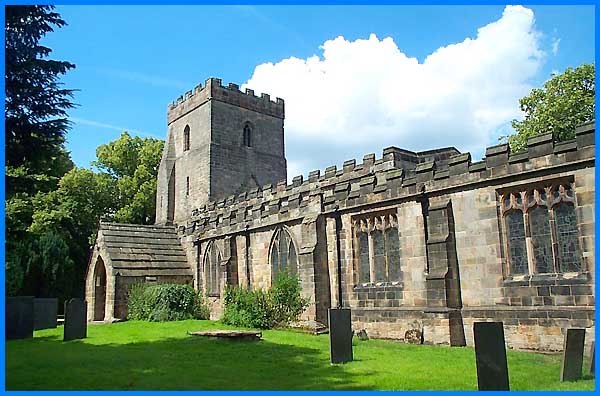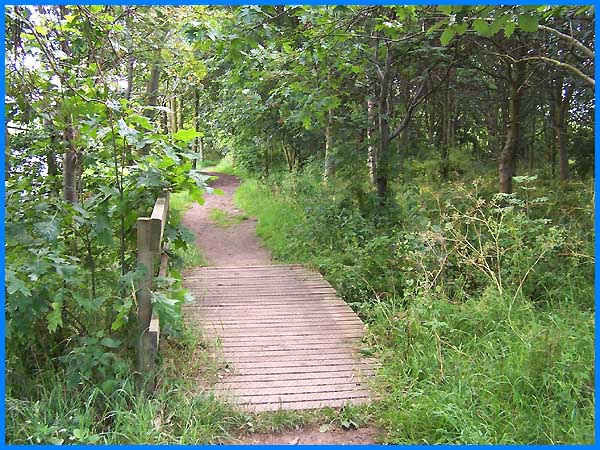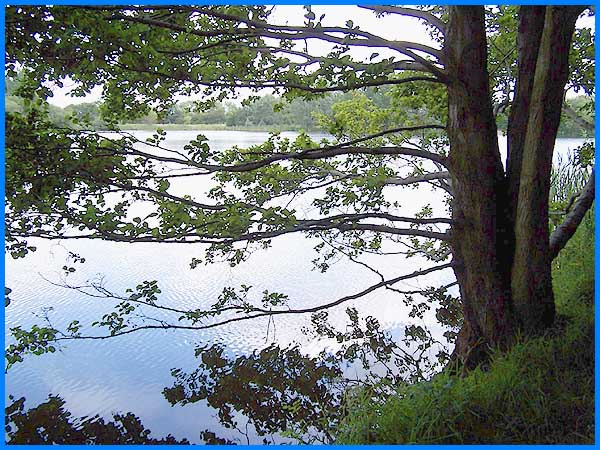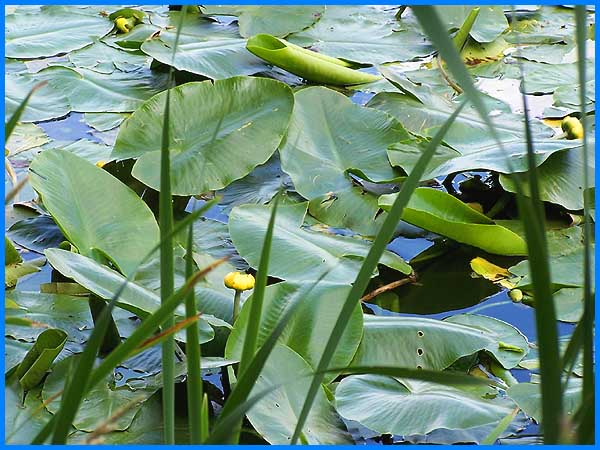Church Wilne - St Chad's Water
w/e 11 July 2004

Not far from the banks of the River Derwent close
to its estuary with the Trent and about a mile south of Draycott
is the tiny village of Church Wilne. There are few buildings
left in what was a mediaeval settlement but the most prominent
is this Saxon church. Nearby are some farm buildings where there
was the well of St Chad, first Bishop of Lichfield, who ruled
over the diocese between 669AD and 672AD. It is said that
the well was used for baptising early converts to Christianity.
|
A Kodak DC280 was used for the image above; the
following images of St Chad's Water were taken with a Kodak DX6490

A fairly new addition to the landscape is a large expanse of
water which the church now overlooks. This has been declared
a Local Nature Reserve by Erewash Borough Council and is under
the jurisdiction of Draycott Parish Council. The site is managed
by Groundwork Erewash Valley. Several wooden wildlife sculptures
have been placed at various points around St Chad's Water as
part of the enhancement of the former gravel pit.
|

A mile long path enables visitors to circumnavigate the reserve
through a number of different habitats part of it, as seen here,
being through woodland. There are also meadows, open areas of
shoreline and hedgerows which, together with the adjacent farmland,
encourage a variety of wildlife.
|

It is said that Kingfishers can sometimes be seen flying across
the water but obviously not today. Nevertheless, the views across
St Chad's Water through the branches of the trees were very pleasant.
|

Dragonflies and damselflies are also common sights as well as
many other insects, the lily pads at the water's edge often providing
a resting place.
|

One of the UK's most widespread species of butterfly is the Meadow
Brown and although many colonies have been lost due to agricultural
intensification, there were still lots to be seen around St Chad's
Water. The site was created during the 1970s after the excavation
of gravel but work continues now to improve the recreational
and landscape aspects as well as for the benefit of the wildlife
and the environment.
|

